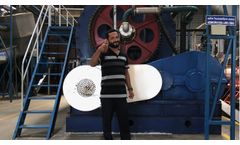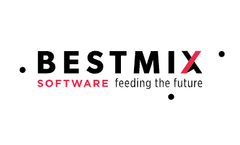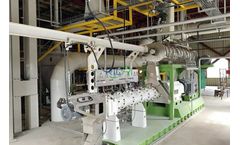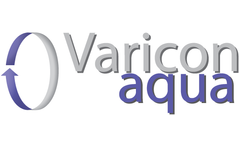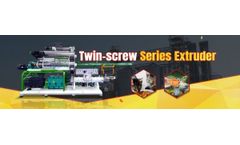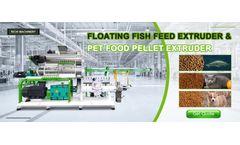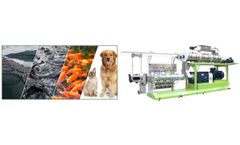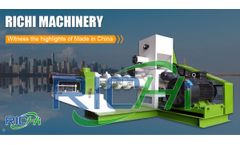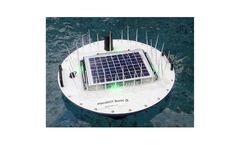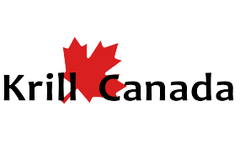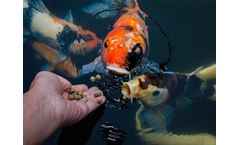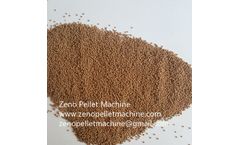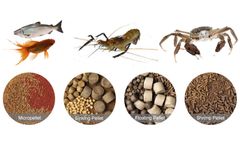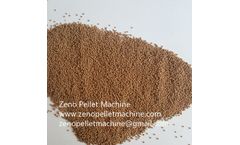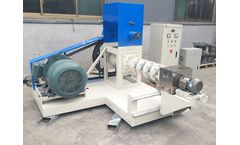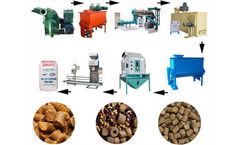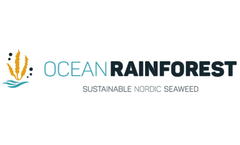Refine by
Aquaculture Feed Articles & Analysis
51 articles found
These manufacturers play a pivotal role in providing innovative and efficient solutions for fish meal production, contributing to the sustainability of the aquaculture and feed industries. In this article, we'll explore the expertise and offerings of leading fish meal machine manufacturers in China, highlighting their commitment to quality, reliability, and ...
Skretting, the global aquafeed division of Nutreco, provides innovative and sustainable nutritional solutions and services to the aquaculture industry. This global player has production facilities in 18 countries on five continents. In 2022, the company produced and supplied more than 3 million tons of high-quality feed for more than 60 species of fish and ...
ByBESTMIX
At its core, a fish feed mill is a kind of equipment made use of in the tank farming industry to make fish feed pellets. ...
Installed and commissioned to support the aquaculture feed development trials under the guidance of Dr Claudio Fuentes Grunwald and his team. ...
The technological benefits attained by RICHI's initiatives in drifting fish feed making devices throughout the years are fully shown in the floating fish feed production line. Easy procedure, very easy to find out, specific specification control, to make sure that the product is completed in a certain temperature, pressure, moisture and time. Sensible framework style, unique ...
Why Use Pellet Machinery for Making Animal Feed Animal feed pellet machinery can be electric flat die feed pellet mill, diesel flat die feed pellet mill or ring die feed pellet mill according to the production scale. They are the feed pellet machinery for sale in the global market. Flat die feed pellet mill is mainly used as small scale farm-use or personal use feed pellet machinery, while ring ...
According to the nature of fish feed products, it is split into sinking fish feed as well as floating fish feed; it is an perfect tools choice for the aquaculture industry. ...
Today, aquatic floating feed maker modern technology is very popular in the manufacturing of aquafeeds, as it can be utilized to generate a range of feeds, whether floating or sinking, depending on the demands of each varieties. Additionally, the extruded feed made by water floating feed machine has much less deterioration and also high performance, assisting to improve ...
1. Where can I find floating fish feed making equipment unit? With the constant progress of the breeding sector, in the ranch, the complete collection of drifting fish feed making equipment systems has long become the pioneer of contemporary breeding. Using full collections of floating fish feed making equipment can not just considerably decrease labor, however also enhance the ...
The feed created by the tank farming fish feed extruder equipment is hard pellets, as well as the other is the extruded feed pellet maker, and also the refined fish feed is soft pellets. Related post: floating fish feed extruder machine Today, Richi Machinery will speak about the extruded feed ...
"Dissolved oxygen is the most critical water quality parameter in warmwater aquaculture. As we feed fish more and more, the dissolved oxygen will drop lower and lower in the early morning hours. ...
ByAquasend
Krill is a source of natural carotenoids. Over 95% of the pigments present in krill are in the form of asthaxantin, which is the only type of pigment that fixes onto the flesh of salmon when krill is used in the diet and the flesh color is the same that it is found in wild salmon (Hue). Pigments in krill are esterified giving them more stability. Asthaxantine is not only a pigment, but also ...
There are two types of aquatic food pellets commonly sold for farming fish or other aquatic species. The pellets have enough density to allow them to sink into the water, which is necessary for crustaceans or bottom-feeding fish, or they have a reduced density to allow them to float on the surface of the water. Floating fish feed pellets are usually produced by floating fish feed pellet machine ...
As an important factor in scaled fish farming and aquaculture industry, fish feed production has the big effect on both fish growth efficiency and fish farming cost. ...
We have two types of fish feed extruder, dry type and wet type model fish feed machine. Our machines can produce both floating and sinking fish feed pellets. ...
Manufactured feeds is produced by feed pellet machine ,which is an important part of modern commercial aquaculture, providing the balanced nutrition needed by farmed fish. ...
With our fish feed machine, even those who are just trotting in aquaculture business can afford to make fish feeds themselves using available materials in Nigeria. One of the challenges of fish farmers is feed in Nigeria and 80 percent of the cost of fish farming is the feed. ...
Fish feed pellet is very important for aquaculture. Fish feed pellet is of higher nutrition, stable performance, and it can float in the water for a long time without polluting the water. ...
Probiotics used in the aqua environment is an increasing attempt to enhance water and pond/lake soil quality. Probiotics usually have a microbial and plant origin. The most commonly known probiotics belong to bacteria. You may be surprised to learn that bacillus probiotics are used as soil and water quality enhancer in ponds. However, aquaculture is a fast-growing industry to fulfill the demand ...
Seafood aquaculture is one of the fastest growing food production sectors, and there is a growing demand for organic farmed aquaculture products in many countries. Therefore, it is urgent to find alternative sustainable feed ingredients for aquaculture feeds to address these issues. A widely available but ...

